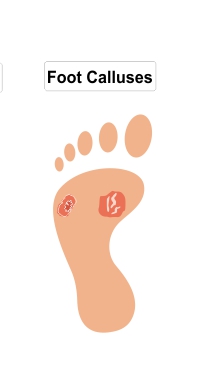Foot Care for People with Calluses in Diabetes
Diabetes causes changes in blood vessels and nerves of the feet. This leads to diabetic foot problems including calluses. Like a foot corn, a callus is the accumulation of dead skin; however, a callus is slightly bigger in appearance. Taking precautions and providing treatment for calluses is important for people with diabetes as it can lead to diabetic foot ulcers.
What is a Callus?
A callus is the formation of dead skin into thickened areas. They are formed due to excessive pressure and friction on the skin. These are generally formed when bone rubs against skin. They normally appear on the ball of the foot, heel, and in the inside area of the big toe.
Causes of Calluses
Calluses can be painful upon pressure. They appear grayish or yellowish and can be caused due to the usage of high heels, ill-fitting shoes, and obesity leading to pressure, abnormal walking style, flat foot, and high arch feet.
Treatment
Calluses generally do not cause any pain, but in some cases calluses do cause pain. As against treatment provided for non-diabetic people, calluses have to be treated with special care in people with diabetes.
In people with diabetes, calluses should not be removed at home without medical assistance. This is because it can lead to diabetic foot infections with the usage of unsafe and unsterilized blades. Usage of over the counter medications containing salicylic acid should be avoided. This is because salicylic acid tends to melt healthy skin cells present beside the callus.
People with diabetes can have other symptoms along with calluses. They can have tingling and loss of sensation due to nerve damage. This needs special diabetic foot care. It is important that such calluses be treated with the help of a podiatrist.
Calluses tend to form more often in people with diabetes, especially in people with diabetic neuropathy. They even grow faster than in non-diabetic people. These calluses can develop into diabetic foot ulcers if untreated. Podiatrists trim these calluses with sterilized equipment in order to relieve further pressure on them.
Prevention of Foot Calluses
- Wear properly fitting diabetes footwear with insole cushioning
- Do not walk barefoot
- Do not wear sandals that have strips in between toes
- Lubricate feet daily with moisturizers so that they are not dry
- Keep your feet away from heat
- Do not soak your feet for long
- Trim toenails regularly with clean and sterilized nail cutters
- Do not try to cut or file away existing calluses
- If you find any change in the callus, consult your podiatrist or diabetes doctor immediately.











